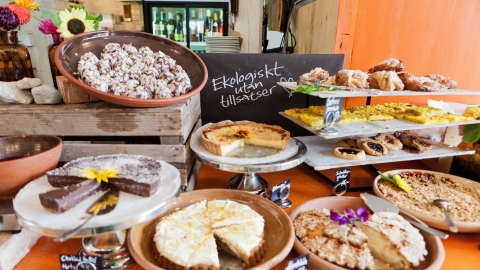In the Emilia-Romagna region of northern Italy, there is a small city called Modena, with a population of less than 200,000. Although not as well known as its neighbor Bologna, Modena is famous for producing top racing cars such as Ferrari, De Tomaso, Lamborghini, Pagani and Maserati. Modena is also the birthplace of opera singer Luciano Pavarotti (1935-2007). But since 1995, Modena has attracted not only car and music enthusiasts but also food lovers, thanks to the appearance of Osteria Francescana - a 3-star restaurant opened by local chef Massimo Bottura.
The pride of Modena
The beginning of Osteria Francescana was not easy. In the 90s of the last century, Modena was a small city, not much exposed to the world's contemporary culinary arts. In general, Italians are quite conservative in their taste and passionate about their traditional flavors to the point of not accepting new innovations. Italian food portions are usually very large, while at Osteria Francescana each dish is presented in a delicate style with moderate quantity. Therefore, the local people had a hard time accepting Massimo Bottura's idea of renewing traditional dishes.
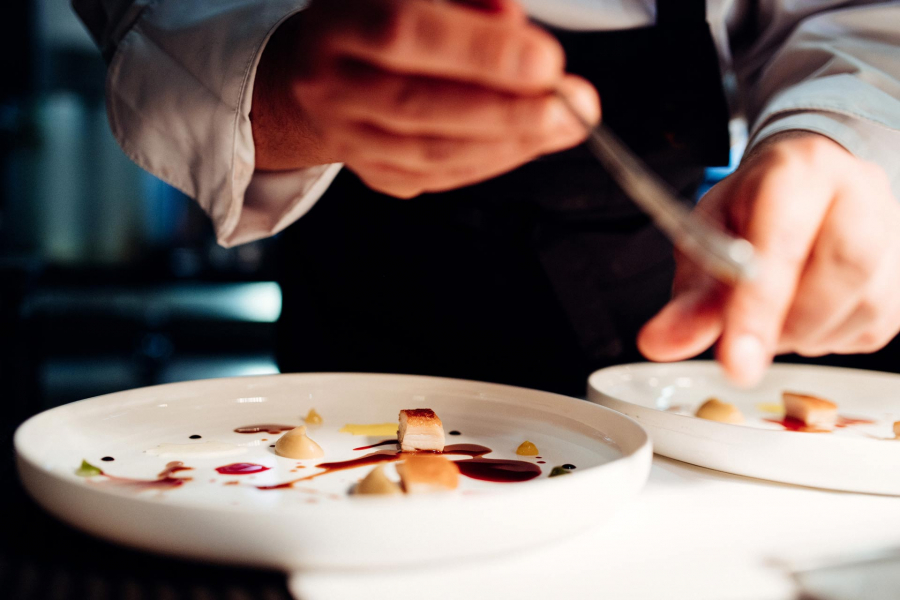
However, thanks to the persistent efforts of the Italian-American couple Massimo Bottura and Lara Gilmore, Osteria Francescana restaurant has been welcomed by local diners and known worldwide. By 2013, Osteria Francescana attracted attention with the 3rd place in the British ranking “World's 50 Best Restaurants”. In 2016 and 2018, it rose to the number 1 restaurant in the world and was the first restaurant from Italy to hold this position. Now, when mentioning Modena, we mention Osteria Francescana. My family was very lucky to have booked a table here in December 2017.
In modernity there is tradition.
On the Osteria Francescana website it says: “Every object reveals a layer of meaning. Contemporary art is an inspiration, a guide, and a muse. From Maurizio Cattelan to Damien Hirst to Duane Hanson, art is an invitation to discover.” Massimo Bottura is inspired by art, music, slow food, and fast cars. Most importantly, his childhood memories of cooking with his grandmother in the kitchen, which is where his culinary career really began. Even though he went to law school, Bottura chose the culinary path.
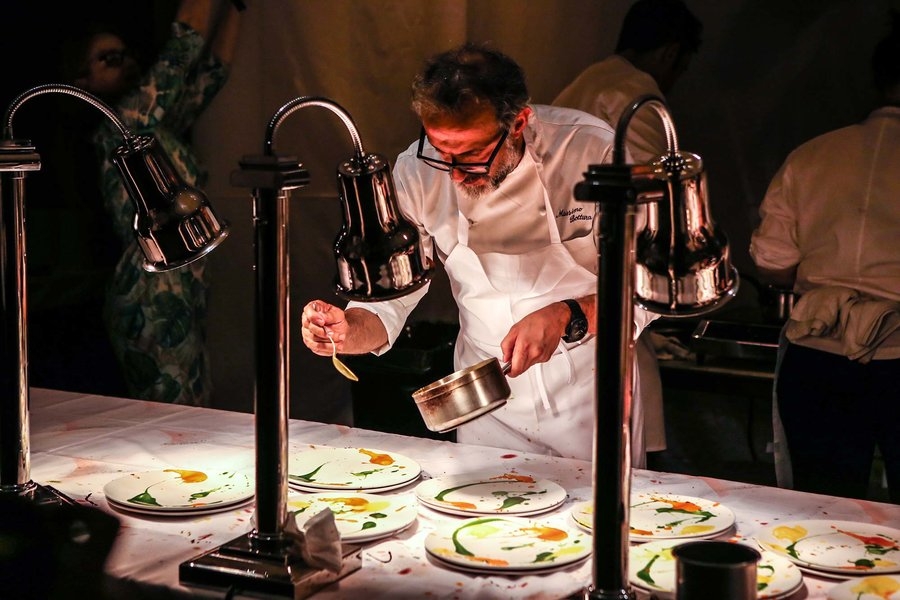
Through each dish, which seemed to have reached perfection, we sensed Bottura’s intense passion for Italian cuisine. Instead of ordering a tasting menu, we chose our own dishes, focusing on his most famous dishes or using Modena’s specialty ingredients. The appetizer was one of his signature dishes: Five Ages of Parmigiano Reggiano. The main ingredient of this dish is the king of cheeses: Parmigiano Reggiano, also known as Parmesan. This Modena specialty was prepared in five different ways: 24-month Parmesan was made into a mousse, 30-month Parmesan foam, 36-month Parmesan sauce, 40-month Parmesan crispy galette and 50-month Parmesan “air”. I've eaten regular Parmesan cheese many times and thought I was used to its taste, but I didn't expect Parmesan to be able to bring such a creative dish.
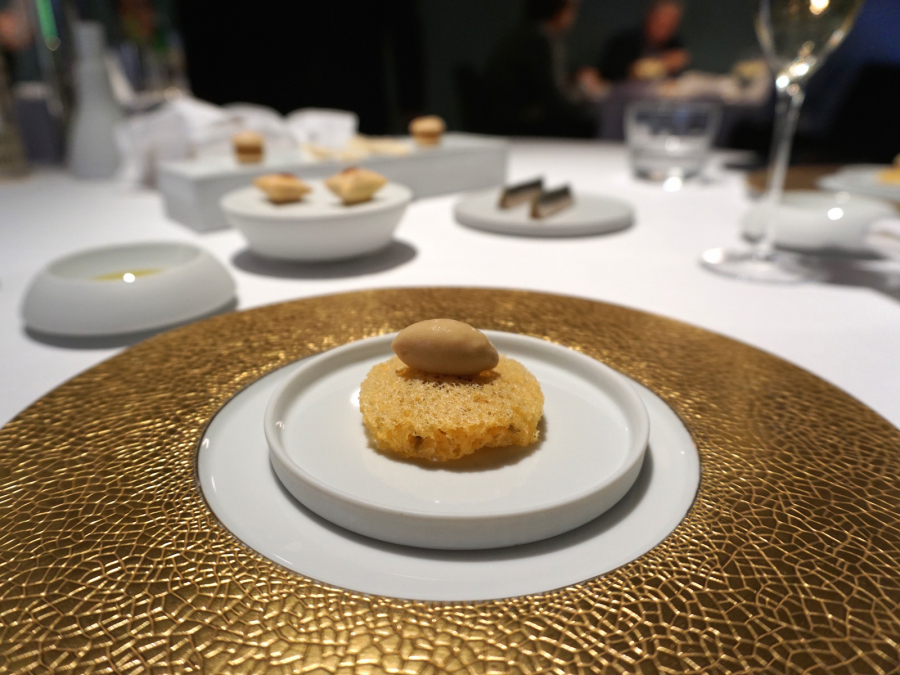
Next up is The Crunchy Part Of The Lasagna. Traditional lasagna is a baked dish made up of layers of pasta, minced beef tomato sauce, cream sauce, and cheese. Bottura says that children in the Emilia-Romagna region often enjoy the charred corners the most, leaving the rest for the adults to eat. Based on that childhood memory, Bottura adds a smoky flavor to his lasagna and removes the pasta, leaving only the crisped cheese. The traditional lasagna taste is unmistakable, but the modern version focuses on the best, most beloved part of Italian children. It is not only a great lasagna, but also a sentimental memory of the country's children.
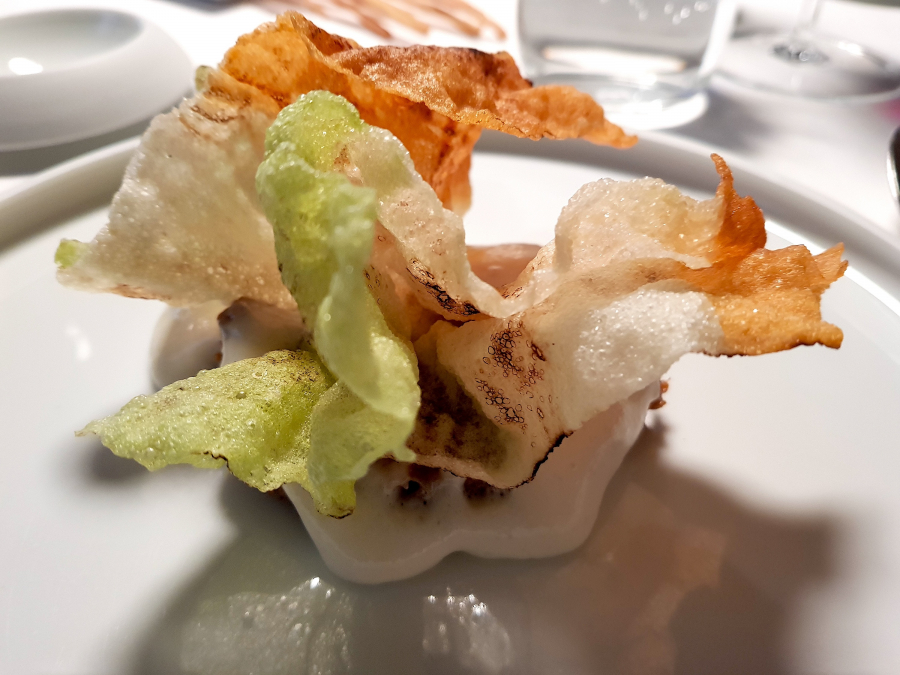
After some side dishes given by the chef for diners to taste, the main course is Suckling Pig, Tender and Crunchy. As the name suggests, the meat is tender and the skin is crispy, a bit like Pekingese roast suckling pig but on another level, with a new way of cooking. A special ingredient of this dish is Villa Manodori balsamic vinegar made by Bottura himself based on a traditional recipe from Modena. The light aroma and sweet and sour taste of the vinegar goes well with the meat. The vinegar has a characteristic flavor thanks to being made from Trebbiano grapes and aged in barrels made from chestnut, oak and juniper wood. Other side dishes include pickled vegetables, delicately sliced and trimmed. Eating meat with vinegar is probably only possible in Italy.
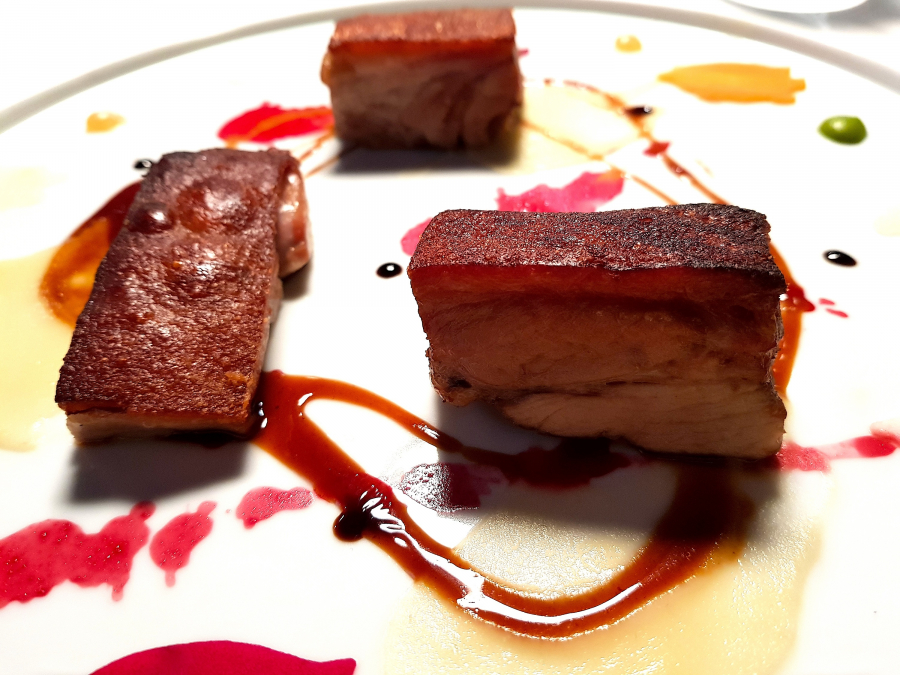
Finally, the dessert, Oops, I Dropped The Lemon Tart!, is so named because the tart is arranged as if it had just been dropped. The tart, which should have been perfectly round in its pan, is instead designed to appear as if it had just been dropped, as Bottura wanted to show that form doesn’t matter and that it’s okay to make mistakes in life. The first impression of this lemon tart is that it looks like a brightly colored abstract painting. The fresh taste of the Sorrento lemon is still intact, creating a refreshing feeling and a perfect end to a meal with many layers of flavors.
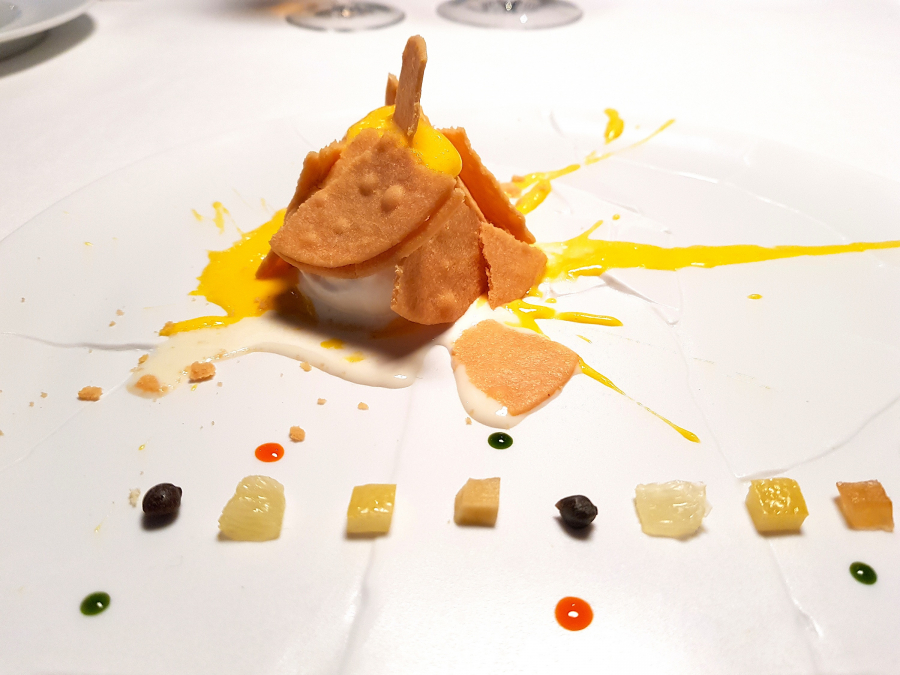
Overall, the dishes we chose were excellent and Bottura must be very talented to bring a new feel to age-old recipes.
A precious gift from Massimo Bottura
That day, Massimo Bottura came to each table to greet and take pictures with the diners. He also shared with us his desire to visit Vietnam in the near future and was very happy to know that we came all the way from Vietnam to enjoy his talent. His restaurant is famous for its luxury but he is a generous and unpretentious person. Not only is he friendly and open, he is also a philanthropist, actively participating in charity activities with his wife. In 2016, he founded the non-profit organization Food for Soul to help fight food waste, a very practical action that benefits the community.
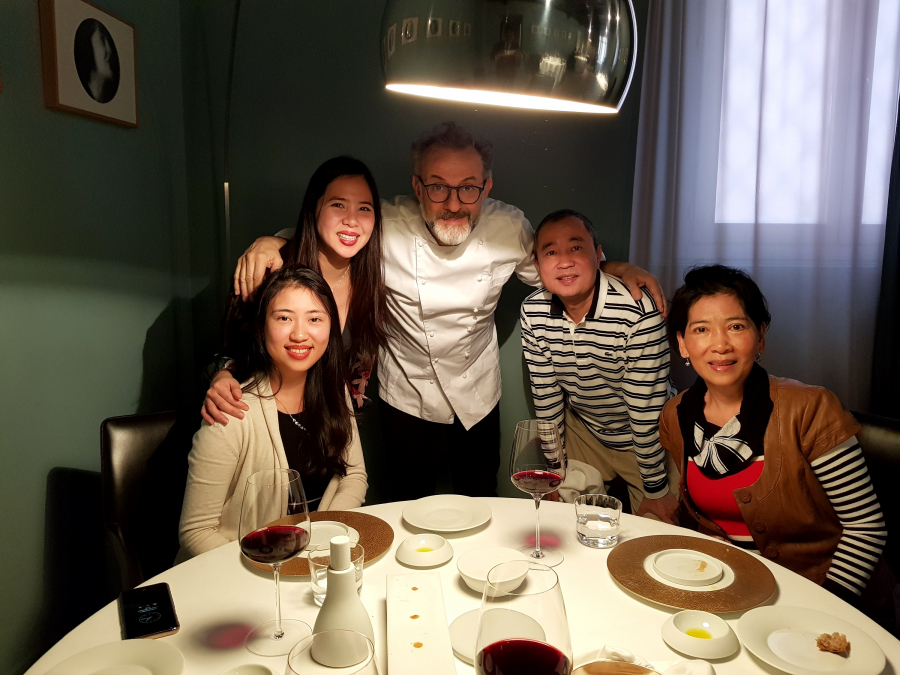
Before leaving, each female diner was given a 50ml bottle of balsamic vinegar, not for sale. This is the same vinegar Bottura used for Suckling Pig, Tender and Crunchy and is produced in limited quantities. Pure balsamic vinegar is expensive because of the carefully selected grapes and the elaborate fermentation process, the longer the vinegar is aged, the more concentrated and delicious it becomes. According to traditional standards, the minimum aging time is 12 years. Balsamic vinegar has a long history and was considered a precious gift among the nobility in the Middle Ages and Renaissance. It can be said that this is the most precious vinegar in the world.
The experience at Massimo Bottura restaurant was an unforgettable one. In addition to the precious vinegars, we also brought back lasting impressions of a talented Italian chef, a world-class restaurant and dishes rich in emotion, both Italian and modern.

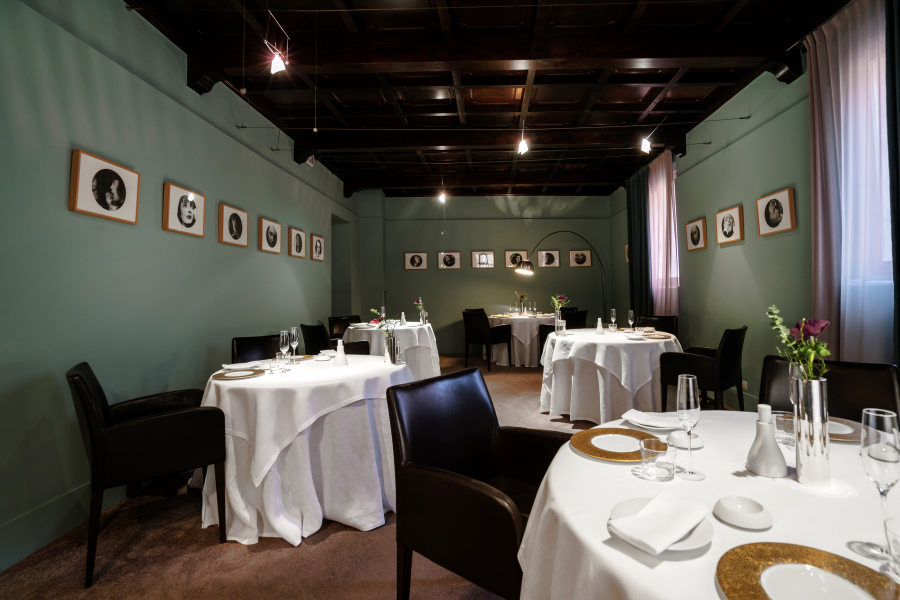
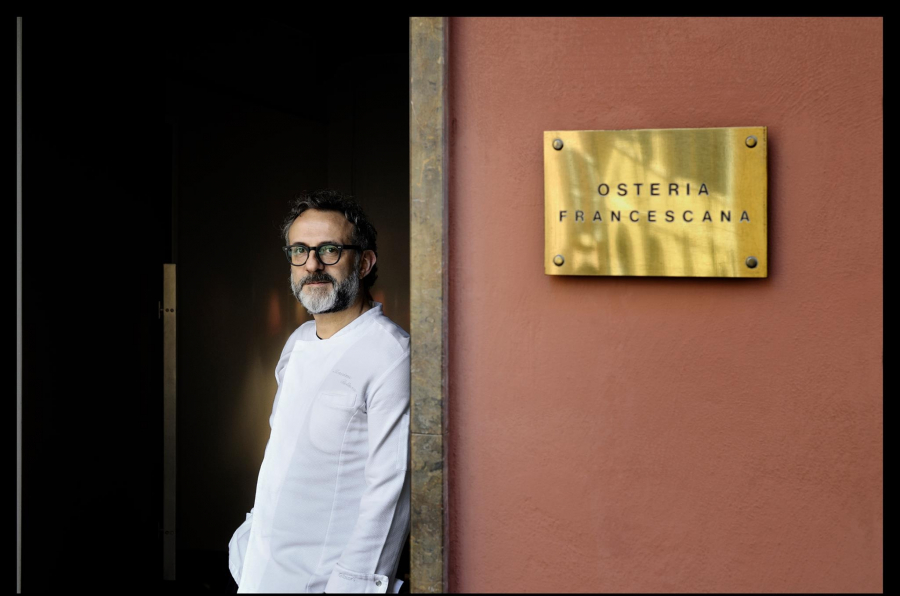
More information
- How to book a table:To eat at Osteria Francescana, reservations are required via the website:https://osteriafrancescana.dinesuperb.com. Reservations can be made for up to 10 people at a time, and can only be made 3 months in advance. On the 1st of every month at 10am sharp, the website opens up reservations for the next 3 months. If there are no available reservations, you can try filling out the “Waiting List” and hoping someone will cancel. The restaurant is closed on Sundays and Mondays.
- Price:A meal excluding drinks costs about 250 - 270 EUR/person (about 6,600,000 - 7,100,000 VND/person).
- How to get to Osteria Francescana:Our family traveled from Rome to Modena by train (with a change in Bologna), then stayed in Modena for a night so we could explore Massimo Bottura’s favorite spots in the city. From Modena train station, it’s a 15-20 minute walk to Osteria Francescana. You can take a bus or taxi from the train station, but walking is the best way to explore Modena.
- Restaurant address:Via Stella, 22, 41121 Modena MO, Italy.
-Massimo Bottura's Instagram: @massimobottura


























